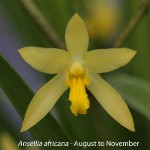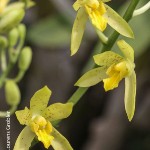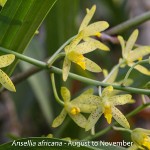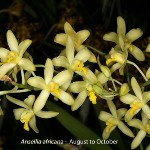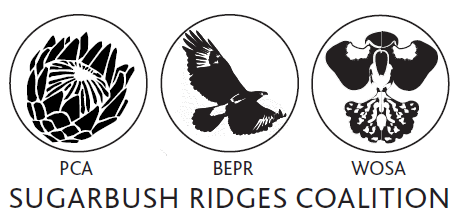Ansellia africana
Description
Robust epiphyte, which can grow to over 1 m tall. Also known as the leopard orchid and is the official emblem of the Witwatersrand Orchid Society (WOS). Single species genus. Pseudobulbs cylindrical with nodes and up to 700 mm tall, with 4 - 10 leaves on each one at the top half of the pseudobulb. Flowers are 25 - 50 mm across. Colour varies from pure yellow to yellow marked with dark chocolate spots to almost completely brown with very little yellow. Lip varies from yellow to blotched with darker markings through to almost red in colour. The lip is three lobed with two to three callus ridges along the mid lobe. Inflorescence usually at the top of the pseudobulb, but also laterally below the leaves. No scent detectable. This is a single species genus.
Syn: Ansellia africana var. australis, Ansellia gigantea var. gigantia, Ansellia gigantea var. nilotica.
Distribution in South Africa
Found in KwaZulu Natal, Mpumulanga and Limpopo Provinces.
Please submit your orchid photographs to OrchidMAP as citizen science records to improve this map.
Register on the Virtual Museum or login.
Typical habitat
This species is common in the warmer and often drier part of SA. They can form large clumps, often in the fork of a tree.
Flowering Period
This species typically flowers between August and October, but has been known to flower as early as June and as late as January.
Distribution elsewhere in Africa
Widespread in tropical Africa, where the flowers are bigger and have more darker blotches.
Conservation Status
Widespread in South Africa with many populations growing in protected environments. Overall, not threatened, although the muthi trade poses a minor threat to certain colonies.
All indigenous orchids are protected under South African legislation as well as CITES regulations.
References and additional information
McMurtry, D., Grobler, L., Grobler, J., Burns, S., 2008. Field Guide to the Orchids of Northern South AFrica and Swaziland. Umdaus Press, Pretoria, South Africa.
This genus and species article was written by Duncan McFarlane and published 2019-04-04.
Proof read and edited by Karsten Wodrich.
Images

